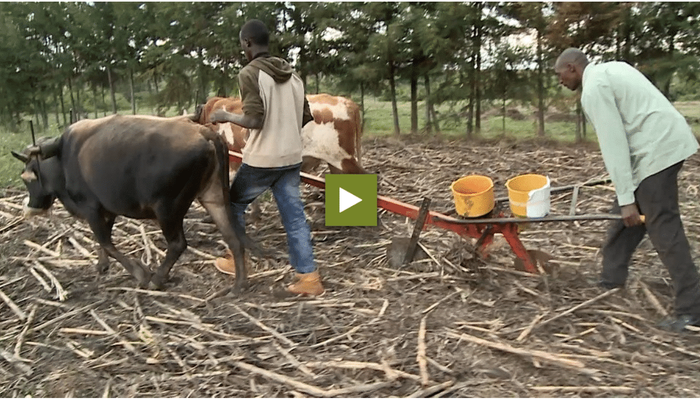With »Conservation agriculture« you can protect and improve the soil.
Many Farmers have problems with dry and infertile soil or too much weeds. Ploughing dries out the soil which causes that the soil can be attacked more easily or could be carried away by wind and rain. If you want to protect your soil, you should plough as little as possible. Also cover the soil with crops and change the crops regularly. Following this system is called conservation agriculture.
Improving soil
The first step is to kill weeds with herbicides instead of ploughing. After this, wait for one week until all weeds died. Then you make a subsoil.
You can choose to install two tools to your animals. A ripper is good if the soil is not compacted. The ripper is attached to a plough and has edgy spikes out of steel.
If the soil is compacted you should use a sub soiler to get deep enough into the ground. Normally you just have to use this tool for the first one to two years.
Both tools open a line without turning the soil. After ripping, add manure to the soil to improve it. This step is especially important during the first year of conservation agriculture.
Use a planter, because it plants and fertilizes at the same time. When you start with conservation agriculture you should use a mineral fertilizer first. Make sure to begin planting directly after you ripped. It is important that the planting happens before the first rain. If you plant during the dry season the planters tubes can be easily blocked. Furthermore, make sure to plant lines whereever you ripped.
After 4 years you don‘t need to rip and use as many herbicides anymore. The mulch will replace most weeds. Herbicides are not good for the environment and people. Just if you don‘t have enough mulch you should continue with herbicides.
You can avoid pests and other diseases, if you change the crops regularly. The different crops react different on pests and diseases.
In the second to fourth year you will see that your yield is successful and the input low.



















